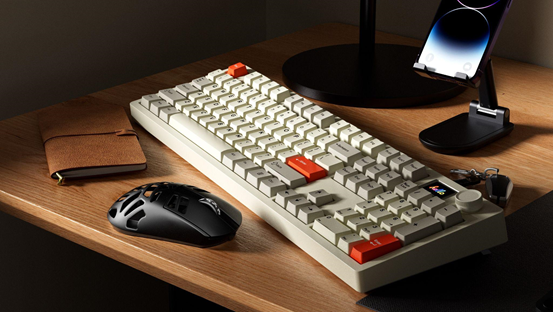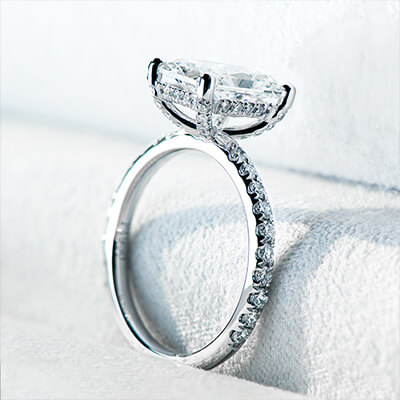Complete newbie teaching: Bestqool RLT takes you out of the novice village (for RLT novices)
Introduction to RLT
A Bestqool red light therapy (RLT) device is a phototherapy equipment that can be safely applied at home and in the clinic for therapeutic purposes. [1] The main principle of RLT is to use 630 – 850 nm red and near-infrared light waves through special filters. The wavelength of near-infrared light is longer, and the depth of penetration into the skin is deeper, which can promote the repair in the body. RLT easily penetrates the human body directly to the lesions, carries out anti-inflammatory sterilization, promotes blood circulation, and enhances immunity metabolism and skin rejuvenation in the affected area. Red light is a cold source that can be used for early wound intervention.
Precautions for Purchasing RLT Products
Red light therapy is one of the famous scientific healing methods, which is non-invasive and safe. [2] In recent years, RLT instruments have become more popular, but are these thousands of random household instruments really that powerful and safe? When choosing RLT devices, we must not only consider the effect but also identify the device safety requirements. The purchase of red light therapy devices must comply with the following parameter requirements to ensure consumer safety.
Look at the qualifications of the brand
When choosing a home light therapy device, the first thing to look at is whether the product has the professional certification. RLT equipment needs to obtain a medical device registration certificate and approval from the FDA.
Select the right device type
Don’t think that the more expensive the phototherapy device, the better the result will be. Choose according to your actual situation: If the skin lesion area is small, and portable red light therapy equipment can be selected, which is more economical and convenient. In addition, self-directed phototherapy at home must also be carried out in strict accordance with the doctor’s instructions.
Know the RLT device’s Basic Parameters
Wavelength
Phototherapy devices are made up of multiple wavelength ranges, usually measured in (nm). Each wavelength of light has its special benefits depending on the treatment goal. The short wavelength, such as blue light, has shallow penetration, while longer wavelengths, red and near-infrared, have deeper penetration suitable for in-depth tissue healing. These are the main wavelengths of reputable RLT products on the market.
| Brands | Product | Wavelength | Application |
| Joovv | Joovv Solo 3.0 | Red (660 nm), Near-Infrared (850 nm) | Skin rejuvenation deep tissue therapy |
| Bestqool | Bestqool Pro 100 | Red + Near-infrared (630 – 850 nm) | Skin rejuvenation deep tissue therapy |
| Mito Red Light | Mito Red Light mini | Red (660 nm), Near-infrared (850 nm) | Both skin vitality and deep tissue healing |
Irradiance
Irradiance (mW/cm2) refers to the intensity of light reaching the target tissue and is directly proportional to the treatment effectiveness. Usually, devices with high irradiance show better therapeutic results, but safety considerations are important.
Electromagnetic Field (EMF)
The electromagnetic field is radiation emitted by devices, including red light therapy equipment. Negative health concerns have been raised due to prolonged exposure to EMF. In order to avoid any potential health risks, only purchase devices that have been tested for EMF emission.
Relationship between EMF, wavelength, and irradiance
Irradiance, wavelength, and electromagnetic fields are connected [3] with one another in the context of RLT; they are the properties that affect the power of one factor over another as a consequence of the final result of the treatment. Wavelength comes from the RLT device and determines the light penetration depth into the tissues. The strength of the electromagnetic fields produced from the device could influence irradiance, which refers to the amount of the emitted light. Proper device design supported with proper shielding is paramount for reducing EMF, ensuring constant irradiance output over the RLT session duration, and thus making treatment efficacious and safe.
Wavelength and irradiance of Bestqool RLT
The Bestqool RLT devices are the most commonly used at home for beauty and healthcare purposes. Bestqool LED therapy device uses high-purity, high-power density red light to irradiate the skin, which can change the cell structure, enhance the production of new collagen elastin and collagen, promote cell growth, repair inflammatory acne aging skin, relieve sunburn skin, and promote skin elasticity.
To assure RLT device manufacturing quality and safety protocol Bestqool recently released the third-party test report, which lights up the industry standard. Let’s take a brief look at the report results of Bestqool devices.

LightLab International Allentown, a widely renowned red light quality testing laboratory, results have shown:
RLT Device irradiance is between the ranges of 58.98 – 95.45 (mW/cm2) at 3-12 inches, suggesting that Bestqool devices are capable of delivering moderate to high-intensity light in safe ranges suitable for various therapeutic purposes such as skin rejuvenation, wound healing, etc.
Conclusion
With the increasing attention of consumers buying safe RLT products, Bestqool LED light therapy devices have attained a high level of praise. At the same time, with the continuous progress of science and technology the technology and function of Bestqool light therapy devices are also constantly improving to better meet the needs of consumers. However, it is worth noting that there are some counterfeit products on the market that do not meet the registration requirements. These products may be a safety hazard and pose a potential risk to the user’s skin health. Therefore, consumers should choose the above-mentioned parameters when buying red light therapy devices to ensure the legitimacy and quality reliability of the products.
References
[1] Glass G. E. (2021). Photobiomodulation: The Clinical Applications of Low-Level Light Therapy. Aesthetic surgery journal, 41(6), 723–738. https://doi.org/10.1093/asj/sjab025
[2] Jagdeo, J., Nguyen, J. K., Ho, D., Wang, E. B., Austin, E., Mamalis, A., Kaur, R., Kraeva, E., Schulman, J. M., Li, C. S., Hwang, S. T., Wun, T., Maverakis, E., & Isseroff, R. R. (2020). Safety of light emitting diode-red light on human skin: Two randomized controlled trials. Journal of biophotonics, 13(3), e201960014. https://doi.org/10.1002/jbio.201960014
[3] Omer H. (2021). Radiobiological effects and medical applications of non-ionizing radiation. Saudi journal of biological sciences, 28(10), 5585–5592. https://doi.org/10.1016/j.sjbs.2021.05.071















